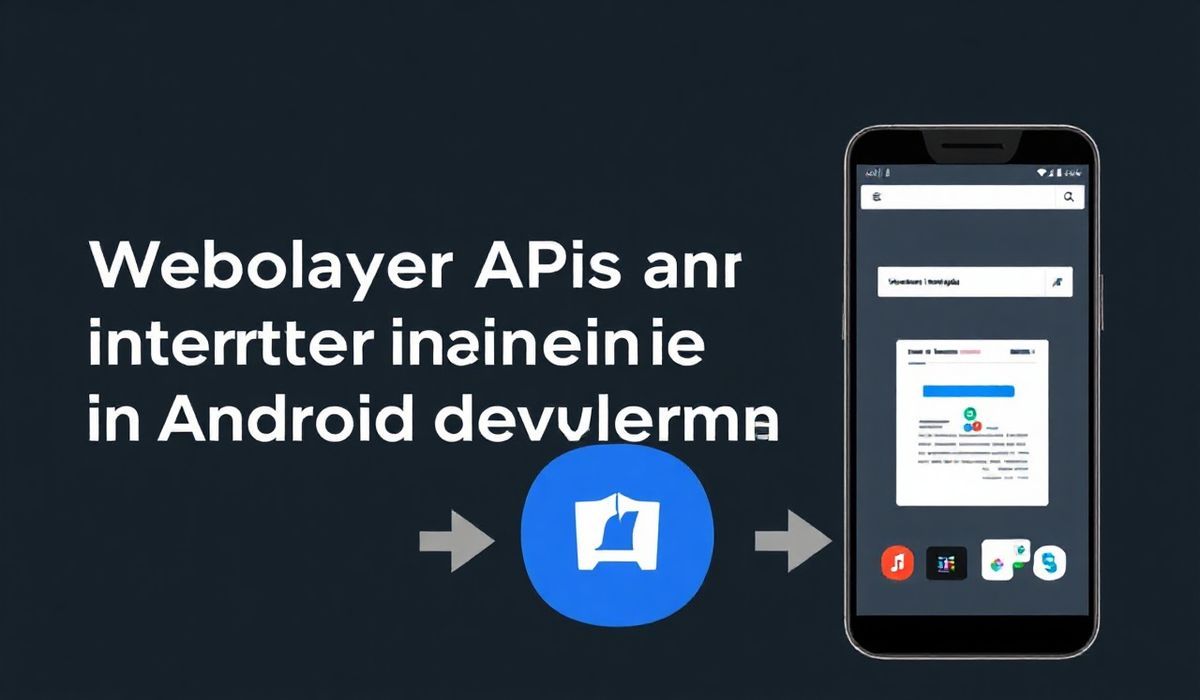Introduction to Weblayer
Weblayer is a highly versatile component in Android development that allows seamless web content integration within mobile applications. By utilizing Weblayer, developers can take advantage of Chromium-based features to deliver secure and reliable web experiences. In this article, we will explore dozens of APIs provided by Weblayer, complete with examples and explanations. These APIs enable developers to build features for accessing web pages, monitoring user activity, and customizing web interactions in mobile apps.
Getting Started with Weblayer
To incorporate Weblayer into your application, add the Weblayer dependency to your project’s build.gradle file:
implementation 'androidx.webkit:weblayer:1.0.0'
Weblayer API Examples
1. Initialization of Weblayer
Before using Weblayer, initialize it in your application class:
WebLayer.initialize(context)
2. Creating a Weblayer Fragment
Display web content seamlessly by creating a Weblayer fragment:
val fragment = WebLayer.createFragment(supportFragmentManager, containerId, "https://example.com")
3. Navigating to a URL
With Weblayer, you can programmatically navigate to any URL:
fragment.navigationController.navigate("https://developer.android.com")
4. Handling Page Load Events
Monitor the loading progress and completion status of a page:
fragment.navigationController.registerNavigationCallback(object : NavigationCallback() {
override fun onNavigationFinished(entry: NavigationEntry) {
Log.d("Weblayer", "Navigation finished to: ${entry.url}")
}
})
5. Enabling JavaScript
Customize Weblayer’s behavior by enabling JavaScript:
fragment.settings.javaScriptEnabled = true
6. Adding Custom Error Handling
Handle errors such as SSL certificates or network issues:
fragment.webViewClient = object : WebLayerClient() {
override fun onReceivedError(request: WebResourceRequest, error: WebResourceError) {
Log.e("WeblayerError", "Error: ${error.description}")
}
}
7. Managing Cookies
Access and control cookies for your app:
val cookieManager = CookieManager.getInstance()
cookieManager.setAcceptCookie(true)
cookieManager.setCookie("https://example.com", "key=value; Path=/;")
8. Loading Content from a String
Load custom HTML or string content directly into Weblayer:
fragment.navigationController.loadStringContent("Hello, Weblayer
")
9. Injecting JavaScript
Run JavaScript code within a loaded page:
fragment.executeJavaScript("alert('Hello, World!');")
10. Saving and Restoring States
Save the navigation state and restore it later:
val bundle = Bundle() fragment.saveState(bundle) fragment.restoreState(bundle)
11. Enabling Dark Theme
Enable dark theme for better UI based on user preference:
fragment.settings.forceDarkMode(WeblayerSettings.FORCE_DARK_AUTO)
Example App Using Weblayer APIs
Here’s an example of an app that uses Weblayer to navigate to a webpage, log page loading events, enable JavaScript, and manage cookies:
class WeblayerExampleActivity : AppCompatActivity() {
private lateinit var fragment: Fragment
override fun onCreate(savedInstanceState: Bundle?) {
super.onCreate(savedInstanceState)
setContentView(R.layout.activity_main)
WebLayer.initialize(this)
fragment = WebLayer.createFragment(supportFragmentManager, R.id.web_container, "https://example.com")
fragment.settings.javaScriptEnabled = true
val cookieManager = CookieManager.getInstance()
cookieManager.setCookie("https://example.com", "session_token=123456; Path=/;")
}
override fun onResume() {
super.onResume()
fragment.navigationController.registerNavigationCallback(object : NavigationCallback() {
override fun onNavigationFinished(entry: NavigationEntry) {
Log.d("Weblayer", "Navigated to: ${entry.url}")
}
})
}
}
With these APIs and the example app, you can get started with building robust web-integrated mobile applications using Weblayer.
Conclusion
Weblayer is a powerful toolkit for creating rich, browser-like experiences directly embedded into your Android app. Leveraging its vast API capabilities, developers can build fully customized web experiences while ensuring security and reliability. Start exploring Weblayer today to innovate in mobile web integration!




